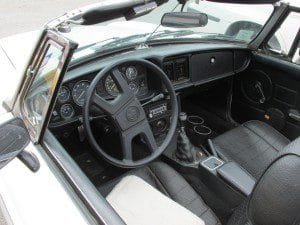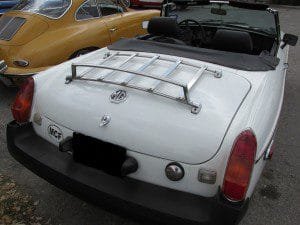MG got it’s name from “Morris Garages Limited which was established in 1910 by William Richard Morris. This Oxford England operation began producing the popular MG automobiles in 1920. In 1935 Morris folded the MG brand into his holding company and then decades later in 2005 the Nanjing Automobile Group purchased the rights to the MG brand and the assets of the MG Rover Group.

The Successful MG MGB
The MGB was one of the longest lasting MG models being produced from 1962 through 1980. Some refer to the MGB’s as the last real MG’s produced.
The engine employed was a 110 cubic inch Inline four cylinder engine delivering as high as 95 horsepower. The engine was essentially an MGA engine bored out to 1.8 liters.
The MG MGB series were known as solid engineered automobiles that were quite sturdy and simple to maintain. In addition to this, the MGB’s were relatively inexpensive to buy and operate.
The MGB was introduced in September of 1962 and was the successor to the MG MGA. British Motor Corporation, which also built Austin-Healeys as well as MGs, saw no reason to make more than minor modifications to the MGB for many years. Most of the changes had to do with the car’s engine which for example utilized a five-main-bearing engine in 1965 that replaced the three-main-bearing design that had come from the earlier MGA.

The MGB was truly a success for Mg. If anything the series stayed around a bit too long since competitors were updating their models since the late 1960’s.
The 1980 MGB Roadster
The 1980 MGB Roadster was the last model year for this series. Eighteen years was a long and successful run. MG sold a total of 500,000 of the MGB’s over it’s very long run. For today’s MG enthusiast this means there’s plenty of spare parts floating around.
1980 MG MGB Roaster Specifications
As mentioned above, not a lot of changes to the MGB over it’s 18 year production period other than with the engine and transmission. The MGB engine continued to be a BMC 100 cubic inch Inline four. The 1962-64 models had three main bearing engines with five main bearing engines coming out in 1965.
A Mark II version of the MGB starting in 1968 had an all synchronized four speed gearbox. The previous MGB had a non-synchronized first gear. The MK II body style was introduced in 1967 and ran through the end of the MGB series in 1980.
Brakes were disc in the front and drums in the rear.

MGB specifications were altered much more to meet U.S. safety regulations in the early 1970’s. This included a dashboard overlay which hid the glovebox and wasn’t really stylish. The engines were detuned which dropped horsepower and torque just about every year thereafter. The U.S. models also got rubber bumpers which didn’t help with styling and suspensions were lifted to have the headlights conform to U.S. height standards.
MGB’s dimensions include a wheelbase of 91.0 inches, a length of 153.3 inches and a weight of about 2,300 lbs.
See the AutoMuseumOnline articles on the links below…
Two good reads regarding the MGB includes…MGB: The Racing Story by author John Baggott and MGB: The Complete Story by Brian Laban.

MGB Collector Cars
Formed in 1973, the MG Owners Club is the World’s largest single marque car club and is located in the U.K. There are several MG car clubs all around the United States and in Australia. There are a total of about fifteen MG car clubs in Australia alone.
Out of all the MG’s produced, one of the very rarest collector MG is the MG K3 Magnette, which can claim to be the most successful of all the MG automobiles. The already popular Magna series was complimented by the addition of what was to be known as the K series Magnettes. There was a K1 and a K2 model but neither appeared at the same time as the MG K3. The K3 was designed at MG’s racing department and prototypes were put together there. When production began two of the K3’s were entered in European competition. The K3 was produced from 1933 through 1934 and only 33 were built. Obviously a very rare car.
The MGB is a great car for starter collections in as much as they are relatively inexpensive. The values are said to be creeping up as more collectors enter the market. As years go by less expertly restored models are for sale thereby pushing prices up. 1980 MGB’s will likely be priced in the $6,000 to $12,000 range depending of course on condition, degree of restoration, exact model and whether rust is a factor.
(Articles and photos copyright 2014 AutoMuseumOnline)